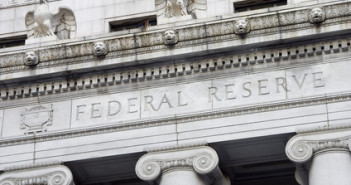The US economy is improving and the Fed is finally moving, just. Yellen and her colleagues seem to try to avoid last year’s “taper tantrum” and take baby steps towards preparing the markets for monetary normalization.
Here are 3 recent signs of moves towards the hawkish side, and how the dollar ignores it so far.
- FOMC Meeting Minutes: The Fed last met in mid June, way ahead of the excellent Non-Farm Payrolls report. Nevertheless, the members finally spelled out that QE would probably come to an end in October. This means that the last cut in bond buys will be in the scale of $15 billion, thus removing the doubt about a last taper of $10 billion in October and an end to QE in December. In addition, many participants want an end to re-investments coming with the first rate hike. This is a first mention of actual tightening of the Fed’s balance sheet. This is not a detailed exit strategy but a first step towards one in the Fed’s communications.
- Fed watcher sees a change: Jon Hilsenrath of the Wall Street Journal has moved the markets more than once. He went to explain the positive shifts in US employment, by various measures and made a clear statement that the “time is ripe” for the Fed to acknowledge these improvements. What does he know that we don’t know? The first answer came shortly afterwards.
- Bullard for the bulls: FOMC member James Bullard gave an interview to Bloomberg and supplied a lot of fuel to USD bulls. Similar to Carney, he said that the Fed can raise interest rates sooner than investors expect and even that inflation will “overshoot”. He tied between the stronger employment picture and a rise in inflation. So far, inflation certainly remained subdued, but this could change. The next FOMC member on the docket is Stanley Fischer, who will talk later in the day.
So where is US dollar after all this?
Not going anywhere fast is the answer.
USD/JPY, the most sensitive pair, is closer to the bottom of the range at around 101.50. GBP/USD is well above 1.71. NZD/USD is making moves on very high ground above 0.88 and edges towards the multi-decade high. Even the euro is doing well: despite all the ECB’s dovishness, at 1.3632, EUR/USD is also closer to the higher end of the range than to the lower one.
Why is the dollar weak?
- It seems that while QE is still going on, markets remain calm, even though the end is nigh.
- Another explanation is that markets are not satisfied with the talk so far: they would prefer hearing explicitly hawkish words from Fed Chair Yellen, and not anybody else.
- Another reasons is structural: the US has a wide trade balance deficit.
- And a last reason is low volatility: with all the liquidity out there, markets can hardly move.
Further reading: First Fed hike likely around Q2 2015
